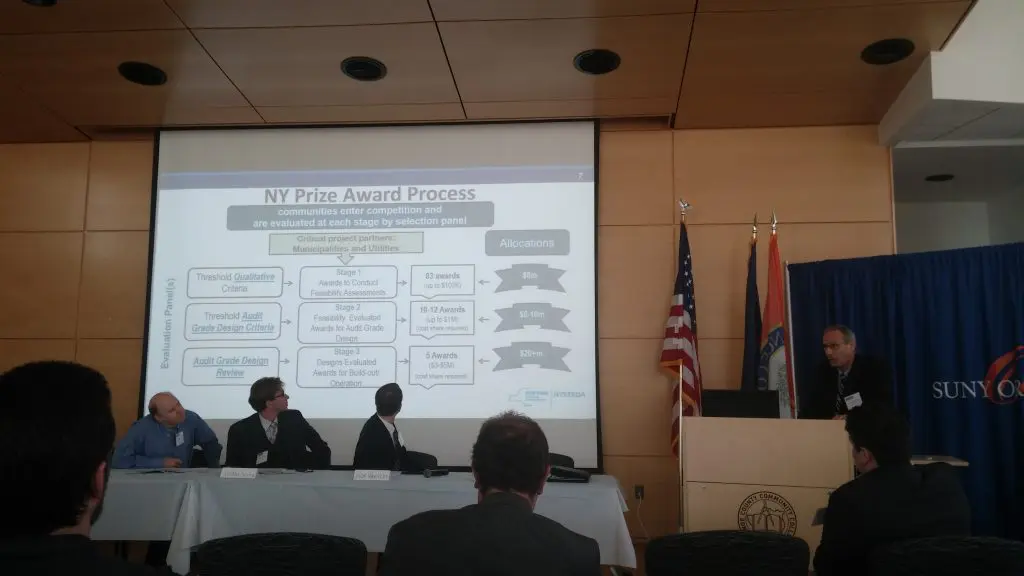Climate Smart Communities Conference Focuses on Climate Mitigation and Adaptation Best Practices
The 2015 Climate Smart Communities Conference held in Newburgh, New York on September 25th brought together state and local municipal officials, program managers, and other stakeholders seeking to address and mitigate the impacts of climate change. The conference focused on the Climate Smart Communities (CSC) program, a unique partnership established in 2009 between six New York State Agencies and local communities designed to reduce greenhouse gas emissions. The program expects local governments to lead by example through adopting more clean and efficient municipal operations and encouraging broader community participation with education and outreach.
There are currently 167 Climate Smart Communities throughout New York State, though levels of engagement vary widely. For a city or town to receive the designation, its local government must adopt a pledge that consists of ten elements ranging from decreasing community energy use to enhancing community resilience. Governments that do so are eligible to work with CSC Regional Coordinators to achieve their climate goals.
 Source: NYS Department of Environmental Conservation
Source: NYS Department of Environmental Conservation
The morning session at the conference started with a discussion of community microgrids. Interest in the small-scale power grids recently spiked in the state thanks in part to the NY Prize (RFP 3044) – a 40 million dollar community microgrid competition. In his presentation, John Saintcross, Assistant Director of NY Prize, emphasized that the competition is designed to promote broad participation. Of the 137 submissions received in the first stage of the competition, only five are expected to win $3-5 million to complete their projects by 2020, but the State hopes that participation alone will encourage local communities to continue exploring the idea of a microgrid and seek other funding opportunities.
The second presentation featured highlights from a New York Power Authority (NYPA) program intended to develop and fund energy plans for the five largest cities outside NYC. The plans included a comprehensive set of initiatives set to reduce energy consumption and greenhouse gas emissions as well as improve quality of life. The cities pursued projects ranging from updating the building codes to upgrading streetlights to LEDs.
However, obstacles to completing these projects exist. For example, eighty percent of municipalities are unable to upgrade streetlights under utility ownership, making regulatory reform providing for a buyout option or an LED tariff their only option if they want to go through with the project. Senate Bill S5205B, which addresses the issue, is currently pending in the NY Legislature.
The conference closed with a joint discussion and anonymous vote on key issues communities face while pursuing sustainability initiatives. The audience members identified flooding and energy outages as primary risks in their communities and called for technical assistance as well as assistance with financing strategies. The state agencies intend to continue working with local municipalities to gather additional feedback and facilitate the process of establishing goals and targets, developing implementation plans, and identifying funding opportunities.
Overall, the conference successfully highlighted innovative community projects, identified areas for program improvement, and provided a platform for participants to exchange ideas and resource sharing among participants.

Irina Rodina is Staff Counsel at Acadia Center focusing on grid modernization and utility reform in New York State. Irina has extensive experience in environmental and energy policy, including renewable project development and market issues, community energy development, sustainable agriculture, and climate change.



















